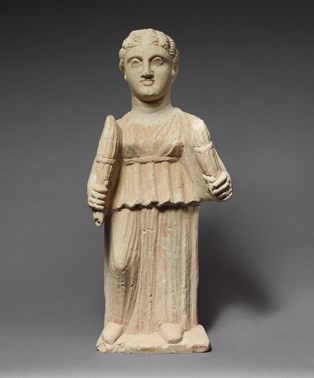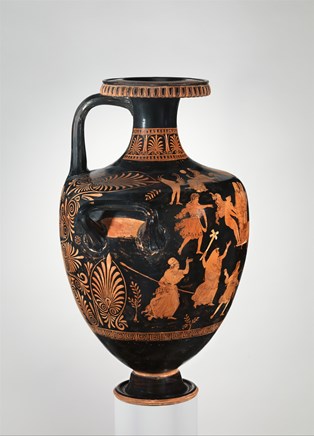Artemis
Artemis was the goddess of hunting, wild animals, children, and childbirth. In the Homeric Hymn to Demeter, she accompanied Persephone as she played in a lovely meadow with the Oceanids and Athena. Artemis is called “she who delights-in-arrows”. She was gathering sweet flowers (crocuses, irises, hyacinths, rose-blooms, and lilies) when Hades appeared in his four-horse chariot and seized Persephone. According to the Greek historian Diodorus Siculus, Persephone, Artemis, and Athena had made the same choice to remain maidens. They spent a lot of time on the island of Sicily, which they loved more than any other place. Each goddess had received a portion of the island as their particular territory, with Artemis securing the island of Syracuse. The Roman poet Valerius Flaccus claimed that the three goddesses were dancing over Mount Hymettus' flowery ridges or beneath the cliffs of Sicily. Persephone was taller than her companions and more beautiful. Artemis could not help her playmate, but her role in the story did not end in the infamous field. According to the Eleusinians, Artemis accompanied Demeter in her search for Persephone, which means that to them, Artemis was identical to Hekate, a chthonic companion of the distraught mother. The depictions of the two goddesses (Artemis and Hekate) were nearly identical. They shared the attributes of a short-skirt, hunting boots, torches, and a hunting dog. Aeschylus, a native Eleusinian, expressed this identification in his drama Suppliant Women, where he explicitly references Artemis-Hecate as a guardian of women during childbirth.

Limestone statuette of Artemis (?) holding two torches, 3rd–1st century BCE, sculpture, The Metropolitan Museum of Art © 2000–2023 The Metropolitan Museum of Art / Public domain

Terracotta hydria. The abduction of Persephone by Hades surrounded by gods [Artemis, Athena, Demeter], Group of B.M. F 308, ca. 340–330 BCE, The Metropolitan Museum of Art © 2000–2023 The Metropolitan Museum of Art / Public domain






